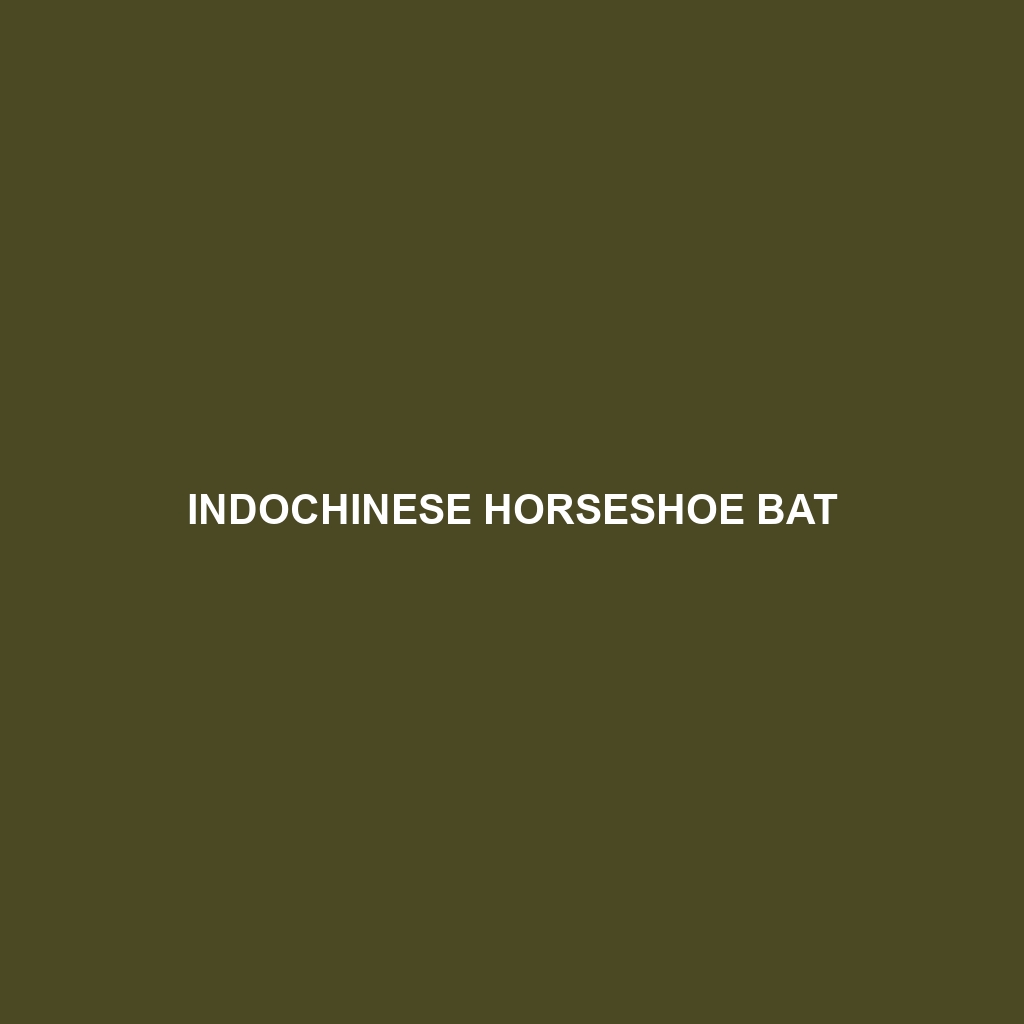Sulawesi Horseshoe Bat
Common Name: Sulawesi Horseshoe Bat
Scientific Name: Rhinolophus celebensis
Habitat
The Sulawesi Horseshoe Bat is primarily found on the island of Sulawesi in Indonesia. Its preferred habitat includes tropical rainforest regions, limestone caves, and areas with dense vegetation. This species thrives in warm, humid environments, often roosting in caves or tree hollows, where they can find protection and suitable microclimates for their needs.
Physical Characteristics
This species is medium-sized for a bat, with a wingspan ranging from 25 to 30 centimeters. The Sulawesi Horseshoe Bat has a distinctive horseshoe-shaped structure on its nose, which aids in echolocation. Its fur is typically reddish-brown to dark brown, and its body is characterized by a rounded face and large ears. The combination of features makes it easily identified among bat species in its habitat.
Behavior
The Sulawesi Horseshoe Bat exhibits nocturnal behavior, becoming active at dusk to forage for food. They are known for their agile flight and ability to navigate through cluttered environments using echolocation. Socially, they often roost in groups, which can number in the hundreds, particularly in caves. Their breeding behavior typically involves vocal displays and intricate courtship rituals during mating season.
Diet
As an insectivorous bat, the Sulawesi Horseshoe Bat primarily feeds on a variety of insects, including moths, beetles, and flies. They are skilled hunters and employ their echolocation abilities to detect and capture prey mid-air. The bat’s diet plays a crucial role in controlling insect populations, making it an important part of its ecosystem.
Reproduction
The breeding season for the Sulawesi Horseshoe Bat generally occurs during the wet season, when food sources are more abundant. Females typically give birth to a single offspring after a gestation period of around 60 days. Maternal care is prominent, with mothers nurturing their young by providing warmth and protection in the roosting sites.
Conservation Status
The Sulawesi Horseshoe Bat is currently listed as vulnerable on the IUCN Red List due to habitat loss and degradation caused by deforestation and human encroachment. Conservation efforts are critical to preserve their natural habitats and ensure survival.
Interesting Facts
One fascinating aspect of the Sulawesi Horseshoe Bat is its ability to echolocate with remarkable precision, allowing it to maneuver in total darkness. Additionally, these bats are known to be highly adaptable, which could help mitigate some effects of environmental changes they face.
Role in Ecosystem
The Sulawesi Horseshoe Bat plays a pivotal role in its ecosystem as a natural pest controller. By feeding on various insects, it helps to maintain balanced populations of these organisms. Furthermore, as prey for larger predators, they contribute to the food web and overall ecological health of their environment.
